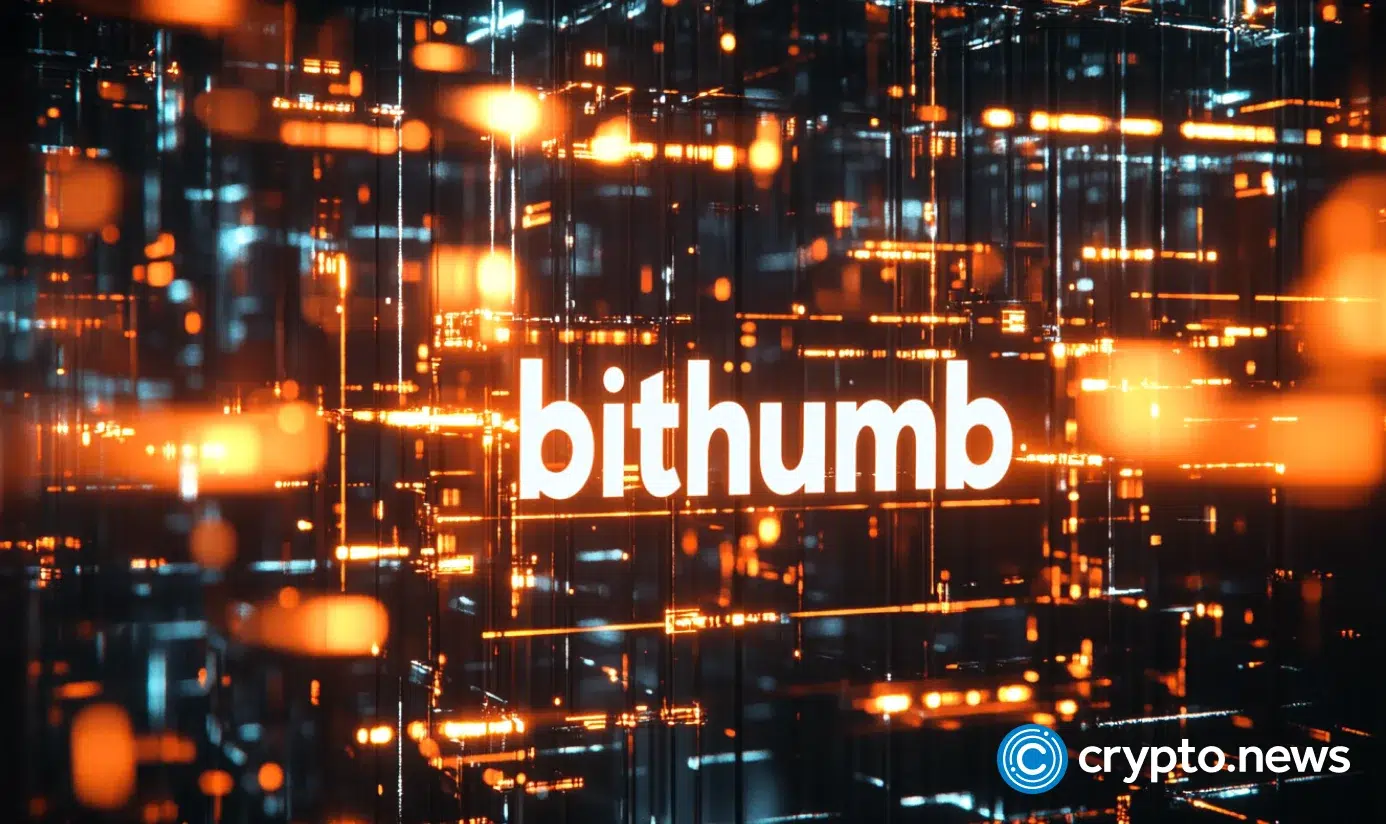cryptocurrency
What are security tokens? A guide to asset-backed tokens
Published
6 months agoon
By
admin

You probably come across a lot of paperwork and restrictions when it comes to buying a piece of real estate or a company share in the real world.
Security tokens offer a solution to this problem by becoming a digital representation of your real-world asset in the blockchain world.
In this article, we’ll take a deep dive into what are security tokens, their types, how they work, and their future in the cryptocurrency world.
What is a security token?
Security tokens are the bridge between traditional finance and digital assets. These non-tangible tokens represent your ownership in the real world and hence make the whole process of buying, selling, and trading real-world assets a whole lot easier.
It can be any real-world asset including real estate, stocks, bonds, or even a piece of art. If it’s tangible and can be bought and sold, it can be tied to a security token through which ownership can be transferred easily from one person to another.
While normal cryptocurrencies may not be subject to many regulations, tokens acting as security must abide by stringent regulatory laws to keep operating as a security. They are usually issued through a process known as Security Token Offering (STO), in which interested investors buy tokens that represent their ownership of any physical or digital asset in the real world.
Now that we’ve explained security tokens, let’s learn how they work.
How do security tokens work?
Security tokens operate on blockchain platforms that are coded through smart contracts that abide by strict laws of ownership and transfer, coded within them. Each token represents an ownership or a real-world asset, and anyone who owns a token acting as security has a legal claim to a share of the asset to which the token is tied.
As discussed above, these tokens are issued through an STO which ensures the rights of both the issuer and investor of the token. Blockchain and smart contracts play a key role in automatically calculating and transferring ownership of security tokens from one party to another without the need for third-party intermediaries.
Furthermore, anyone can own a fraction of a real-world asset and isn’t bound to buy the whole asset, making this concept even more attractive for global investors.
Types of security tokens
There are many types and examples of security tokens in the real world, however, not all of them are popular. Here we will discuss some of the most commonly used tokens that act as securities for real-world assets:
Debt tokens: Companies can issue debt tokens that represent loans or bonds issued by them, and these tokens are then used for paying interest to token holders over time.
Equity tokens: Equity tokens are given to anyone who purchases a company’s share or ownership. In return for buying equity tokens, a person can vote on governance matters and claim the company’s profits as long as they hold the equity tokens and don’t transfer them to another user.
Asset-backed tokens: Asset-backed tokens are one of the classic security tokens examples, as they tied to tangible assets like real estate, gold, or artwork. These tokens give investors fractional ownership of these assets, making these big markets easier to access for a global audience.
Each type of token that acts as security offers unique opportunities for investors to diversify their portfolios and gain exposure to new asset classes while maintaining compliance with regulations.
Advantages of security tokens
Security tokens offer a lot of advantages to the global financial ecosystem which includes investors, issuers of these tokens, and the general public as well. Here are some of them:
Liquidity: Limited access means less liquidity and this restriction is lifted when real-world assets are tied to securities which are represented by digital tokens that can be bought by anyone in the world without much paperwork or travel.
Transparency: Every transaction on the blockchain has a permanent record, is secure, and is tamper-proof and all of this promotes transparency between the issuer of the tokens and the investors as well.
Fractional Ownership: Not everyone has the same level of financial capacity to buy an expensive piece of art or real estate. Instead, tokens acting as security allow everyone to buy some part of a real-world asset and sell their part of the asset in profits, when that asset has appreciated over time.
Automation: The lack of human involvement on the blockchain on which these tokens operate, reduces any administrative costs and errors. Real-world assets are bought and sold seamlessly, and dividend distribution and ownership transfers happen within seconds by following automated hard-coded laws in the blockchain’s smart contract.
Security token vs cryptocurrency
While both cryptocurrencies and security tokens may seem the same at first glance, in reality, they have a lot of differences between them.
You see cryptocurrencies like Bitcoin or Ethereum are digital money that are traded on crypto exchanges and are primarily not tied to any asset or claim, and are purely used as a store of monetary value.
On the other hand, tokens acting as security directly represent ownership of assets in the real world. They are also required to follow strict laws of traditional investments in the real world. Cryptocurrencies are unregulated and often decentralized, while tokens issued as securities are issued in a legal environment with regulated and documented laws.
Challenges and risks
Regulatory uncertainty poses the biggest challenge and risk in the mass adoption of tokens that are deemed as securities or plan to apply for becoming a security token. While many countries have shown interest in this concept, there is still confusion about when proper laws will be formed around these tokens that provide a sense of security for investors and issuers alike.
Not being widely accepted also means that liquidity can be a big problem as they are not yet traded on traditional exchanges. A limited market means it is difficult for a common investor to invest in tokens acting as security and choose to go for traditional cryptocurrencies instead.
Also, the technology behind these tokens on the blockchain is still evolving, which means a potential threat of security breaches is possible.
The future of security tokens
According to several experts, tokens registered as security have a bright future ahead of them and will completely transform the financial sector. This means that the capacity to tokenize a broad range of assets, is anticipated to grow and we may get to see more security token examples in the future.
Furthermore, advancements in smart contract technology will make asset ownership and transfer even more efficient. A wider institutional acceptance of blockchain-based securities is expected which might boost traditional financial sectors including private equity, real estate, and banking.
Overall, the future of these tokens is heavily dependent on two key factors. One is the extent of advancement in blockchain technology and whether it can handle the risks and capacity of challenges that will arise. And secondly, it is regulatory compliance on a global scale that will make or break the future of these tokens in the real world. In all of this uncertainty, your job is to learn what is a security token and spread awareness about its advantages and risks in your ecosystem which may fuel its adoption significantly.
Source link
You may like


Dems Say They’re Blocked From Info on Verge of Crypto Market Structure Bill Hearings


Dow gains 214 points, markets end higher as strong labor data eases tariff concerns


Ethereum Price Headed For Crash To $2,000 With Current Price Action


Tokenized funds hit $5.7B, scaling fast — Moody’s


Authorities Warn of Phony Text Messages Phishing for Sensitive Information, Telling Victims Their Bank Account Is at Risk


Tether invests in Chilean crypto exchange Orionx
cryptocurrency
Here’s why Sophon crypto rallied over 40% today
Published
14 hours agoon
June 3, 2025By
admin

SOPH, the native token of the entertainment-focused Layer 2 network Sophon, saw a strong rally today after getting listed on South Korea’s major crypto exchange, Bithumb.
According to data from CoinGecko, Sophon (SOPH), the native token of the entertainment-focused Layer 2 network Sophon rallied as high as 445 ot an intraday high of $0.072 on June 3 Asian time while its market cap shot up to $138.5 million.
SOPH rallied in a high-volume trading environment, with data showing its daily trading volume surged by 236% over the past 24 hours. As of now, the altcoin has a circulating supply of 2 billion tokens out of a total supply of 10 billion SOPH tokens.
The key driver behind today’s gains appears to be its listing on Bithumb, which went live on June 2. As one of the largest and most influential exchanges in South Korea, a Bithumb listing often sparks major hype, bringing in a flood of new investors looking to ride the momentum.
However, that’s not the only catalyst. Recent updates from the team revealed that Sophon is partnering with NFT launchpad Mintify to launch exclusive NFT collections, further expanding its Web3 entertainment ecosystem.
On top of that, the team has announced a $4 million developer grant to build new applications and use cases on the Sophon network, which could drive long-term utility for SOPH.
Together, these updates have amplified market optimism.
Sophon completed its token generation event on May 28, airdropping 900 million fully unlocked SOPH tokens, 600 million to L1 farmers, and 300 million to early users. Despite today’s strong performance, some profit-taking could occur in the short term as early airdrop receivers may look to lock in gains.
As reported earlier by crypto.news, Huma Finance’s native token, HUMA, dropped by more than 45% shortly after its own launch across multiple major exchanges.
That said, SOPH may be better positioned to avoid a similar outcome. It already boasts listings on major platforms including Binance, Upbit, OKX, Gate.io, KuCoin, and Bitget, offering wide exposure and deep liquidity. This broad access could help stabilize prices even if the initial hype tapers off.
Source link

Reason to trust

Strict editorial policy that focuses on accuracy, relevance, and impartiality
Created by industry experts and meticulously reviewed
The highest standards in reporting and publishing
Strict editorial policy that focuses on accuracy, relevance, and impartiality
Morbi pretium leo et nisl aliquam mollis. Quisque arcu lorem, ultricies quis pellentesque nec, ullamcorper eu odio.
Recently, Bitcoin (BTC) achieved a new all-time high (ATH) of $111,980 on Binance crypto exchange, surpassing its previous ATH of $108,786 recorded in January 2025. However, this rally is missing a crucial element that has historically fuelled sustained bull markets – retail investor participation.
Bitcoin Rally Low On Retail Interest
According to a recent CryptoQuant Quicktake post by contributor burakkesmeci, retail activity during the current BTC rally is notably subdued. This is unusual, as fresh ATHs typically draw significant attention from smaller investors.
Related Reading
The analyst shared the following chart highlighting this trend. It shows that BTC transfer volume in the $0 to $10,000 range – a proxy for retail demand – has only seen a slight uptick, even as prices surge.

While Bitcoin’s price has been climbing steadily (white line), the 30-day percentage change in retail demand (green line) has remained largely flat. This indicates that the current momentum is likely driven by institutional investors, with retail participants yet to join in meaningfully.
Recent developments support this view. For instance, institutional heavyweight Strategy continues to increase its BTC holdings, now closing in on the 600,000 BTC mark.
Historical patterns – particularly from the 2020–2021 bull run – suggest that while institutional accumulation often kicks off a rally, retail investors are typically the fuel that propels it to sustained highs. Without significant retail volume, the current rally may lose steam.
Concluding, the CryptoQuant analyst stated that for BTC to continue its price expansion, a clear uptick in retail participation is necessary. They added:
We’re seeing early signs of movement, but it’s not yet a breakout. If retail volume kicks in over the next few weeks, new ATHs may just be the beginning.
Predicting BTC’s Next Move
Recent flows from crypto exchanges show that BTC reserves are dwindling at a fast pace. For instance, US-based exchange Coinbase recently saw a new outflow of 7,883 BTC, raising speculations of institutions loading up on the apex digital asset before its next leg up.
Related Reading
Similarly, technicals point toward BTC hitting another ATH soon. The top cryptocurrency by market cap recently broke out of a double bottom pattern on the hourly chart, fuelling hopes of a surge toward the $112,000 mark.
Meanwhile, whale behavior has been mixed. While short-term whales have taken profits, long-term holders remain steadfast, showing minimal signs of selling.
That said, BTC’s medium-term outlook remains overwhelmingly positive, with some researchers predicting a $200,000 price target by the end of 2025. At press time, BTC trades at $108,802, down 0.6% in the past 24 hours.

Featured image from Unsplash, charts from CryptoQuant and TradingView.com
Source link
Blockchain
EU must scrap ill-fitting GDPR rules for blockchains
Published
7 days agoon
May 28, 2025By
admin
Disclosure: The views and opinions expressed here belong solely to the author and do not represent the views and opinions of crypto.news’ editorial.
Last month, the European Data Protection Board (EDPB) quietly published Guidelines 02/2025 on the processing of personal data through blockchain technologies. Buried in paragraph 63 is a line that jolted the entire web3 stack: “When deletion has not been taken into account by design, this may require deleting the whole blockchain.”
That one clause converts GDPR from the world’s privacy gold standard into a kill-switch for every permissionless network. Yes, that includes Bitcoin (BTC), Ethereum (ETH), and the hundreds that settle trillions of dollars a year.
The reality is worse than it seems because deleting every node is the only surefire way to “forget” a transaction. The guideline effectively makes permissionless networks non-compliant by default. Public consultation comes to a close on June 9—after that, the text hardens into Europe’s enforcement playbook. After that, Europe’s future is set.
GDPR was never written for tamper-proof ledgers
The 2018 GDPR authors assumed that data lives on centrally controlled servers where a single operator can erase it. Fast-forward to modern-day public blockchains; the opposite is true. Blockchains are distributed, immutable, and borderless.
Public chains rely on thousands of independent nodes that jointly guarantee history. Since rewriting a block would destroy that integrity, Article 17’s “right to be forgotten” collides head-first with the very feature that makes blockchains trustworthy.
Techniques such as salted hashes, zero-knowledge proofs, and off-chain data pointers already minimize or obfuscate personal information—the new draft barely acknowledges them. Instead, it assumes that a single “data controller” can be identified, which is another notion that undermines decentralization and permissionless network integrity.
Sovereign-cloud ambitions are at risk
For two years, Brussels has promised a sovereign cloud—digital autonomy on European terms. The Commission’s latest policy goals are explicit. By 2030, three-quarters of EU businesses should run on cloud-edge technology; 10,000 climate-neutral edge nodes must be live, and the forthcoming Cloud and AI Development Act vows to triple the EU’s data-centre capacity within seven years.
All of this is framed as digital sovereignty. The problem is, sovereignty requires independence. Today, Amazon Web Services, Microsoft Azure, and Google Cloud still hold roughly 70% of Europe’s cloud market. Members of the European Parliament warn that without an indigenous backbone, EU data remains one United States subpoena away from offshore exposure.
The only architecture that can realistically break that grip is a decentralized cloud in which infrastructure providers are coordinated by blockchain incentives, while data stays inside European data centres. If the EDPB renders those ledgers illegal by design, Brussels will hard-wire the very dependency it claims to end.
Paragraph 63 would kneecap Europe’s builders
By threatening whole-chain deletion whenever a single record cannot be erased, the draft injects existential risk into every European web3 project and ices any future venture funding. Its bias toward permissioned ledgers nudges developers back to the centralized silos policymakers say they oppose.
Labeling volunteer validators “data controllers” would saddle hobbyists with corporate-grade liability, shrink node participation, and weaken network security. Treating every peer-to-peer link as a regulated international transfer risks splintering global consensus behind national borders.
Requiring human overrides for smart contracts breaks composability and undermines everything from decentralized finance to on-chain Environmental Social and Governance reporting, which big energy companies have already piloted.
A joint call-to-action from the European Crypto Initiative (EUCI) and Web3Privacy Now warns that the draft guidelines “fundamentally threaten the existence of public blockchains” across Europe. What more evidence does the EU need to see that including this paragraph will kneecap its own builders?
Privacy-by-design beats prohibition
A cleaner path preserves both privacy and decentralization. Destroying an encryption key or proving in zero-knowledge that the key is irretrievable satisfies the intent of Article 17 without dismantling a ledger. The guidelines should recognize cryptographic deletion alongside physical erasure, state that a 32-byte on-chain hash is not personal data, and treat validators as processors rather than “controllers.”
Brussels has already shown through the Markets in Crypto-Assets Regulation that bespoke rules for frontier tech can be crafted without blanket bans. Striking the kill-switch sentence, codifying key-to-dust deletion, and clarifying validator status would align GDPR with technical reality, all while keeping Europe’s sovereign-cloud strategy alive.
The public-comment portal closes in less than a month, and unless paragraph 63 is rebalanced, Europe risks spending the next decade paying U.S. hyperscalers to host ‘sovereign’ data. Meanwhile, the rest of the world will build on auditable, privacy-preserving rails beyond Brussels’ reach.
With time fast running out, builders, investors, and policymakers should hit that comment portal now, before Europe locks itself out of its own digital future.

Kai Wawrzinek
Kai Wawrzinek is a co-founder of the Impossible Cloud & Impossible Cloud Network. He is a seasoned entrepreneur with a Ph.D. in Law and a proven track record of building successful ventures. Recognizing the need for enterprise-grade solutions in the web3 space, Kai founded Impossible Cloud Network (ICN), a decentralized cloud platform aimed at creating a decentralized alternative to AWS. Before ICN, Kai founded Goodgame Studios, an online game company, and grew the company to over 1,000 employees and generated more than €1 billion in revenue, taking it public on Nasdaq in 2018 through a reverse merger.
Source link
Dems Say They’re Blocked From Info on Verge of Crypto Market Structure Bill Hearings

Dow gains 214 points, markets end higher as strong labor data eases tariff concerns
Ethereum Price Headed For Crash To $2,000 With Current Price Action
Tokenized funds hit $5.7B, scaling fast — Moody’s
Authorities Warn of Phony Text Messages Phishing for Sensitive Information, Telling Victims Their Bank Account Is at Risk

Tether invests in Chilean crypto exchange Orionx

MARA Hits Record-High Bitcoin Production in May
Retail investors no longer FOMO into BTC, altcoins
AVAX Rises 3.8% on Strong Volume, Breaking Key Resistance Levels

K33 begins Bitcoin buying with 10 BTC purchase for treasury strategy
Why $107,500 And $103,500 Are The Levels To Watch
Pakistan Proposes New Crypto Regulations
Japanese Bitcoin Hoarder Metplanet Adds $115,600,000 Worth of BTC As Stock Surpasses 263% Gains on the Year
Bitcoin traders anticipate decline, watch $100K
Ethereum Foundation Restructures R&D Division, Plans ‘Rethink’ on Design and Development

Arthur Hayes, Murad’s Prediction For Meme Coins, AI & DeFi Coins For 2025

Pi Network coin to $10? 4 catalysts that may make it possible

3 Voting Polls Show Why Ripple’s XRP Price Could Hit $10 Soon

Expert Sees Bitcoin Dipping To $50K While Bullish Signs Persist

Aptos Leverages Chainlink To Enhance Scalability and Data Access

Bitcoin Could Rally to $80,000 on the Eve of US Elections

Crypto’s Big Trump Gamble Is Risky

The Future of Bitcoin: Scaling, Institutional Adoption, and Strategic Reserves with Rich Rines

Institutional Investors Go All In on Crypto as 57% Plan to Boost Allocations as Bull Run Heats Up, Sygnum Survey Reveals

Sonic Now ‘Golden Standard’ of Layer-2s After Scaling Transactions to 16,000+ per Second, Says Andre Cronje

Ripple-SEC Case Ends, But These 3 Rivals Could Jump 500x

Has The Bitcoin Price Already Peaked?

A16z-backed Espresso announces mainnet launch of core product

Blockchain groups challenge new broker reporting rule

Xmas Altcoin Rally Insights by BNM Agent I
Trending

 24/7 Cryptocurrency News7 months ago
24/7 Cryptocurrency News7 months agoArthur Hayes, Murad’s Prediction For Meme Coins, AI & DeFi Coins For 2025

 Markets3 months ago
Markets3 months agoPi Network coin to $10? 4 catalysts that may make it possible

 Ripple Price3 months ago
Ripple Price3 months ago3 Voting Polls Show Why Ripple’s XRP Price Could Hit $10 Soon

 Bitcoin5 months ago
Bitcoin5 months agoExpert Sees Bitcoin Dipping To $50K While Bullish Signs Persist

 24/7 Cryptocurrency News5 months ago
24/7 Cryptocurrency News5 months agoAptos Leverages Chainlink To Enhance Scalability and Data Access

 Bitcoin7 months ago
Bitcoin7 months agoBitcoin Could Rally to $80,000 on the Eve of US Elections

 Opinion7 months ago
Opinion7 months agoCrypto’s Big Trump Gamble Is Risky

 Bitcoin4 months ago
Bitcoin4 months agoThe Future of Bitcoin: Scaling, Institutional Adoption, and Strategic Reserves with Rich Rines


